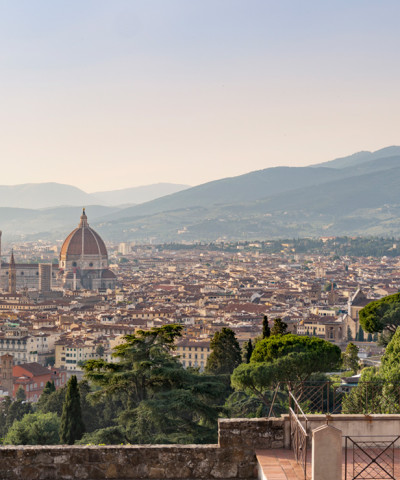Fendi Factory, the new fashion hub in Bagno a Ripoli
On the occasion of Pitti Uomo 104 hosts a super fashion show of the Maison
For the past few months there’s been a new hub for manufacturing excellence in the Tuscan countryside. This is the Fendi Factory, a complex covering 30,000 square metres in Capannuccia, a district of Bagno a Ripoli not far from Florence. On the former site of the historical Fornace Brunelleschi, the complex has to be seen to be believed: it’s a perfect example of cooperation between architecture and environment, so attuned to its surroundings that it practically disappears. Credit is due to the Piuarch architecture studio in Milan for the initial design, which was then developed and coordinated by Fendi’s in-house architecture department.
 FENDI Factory for leathergoods Capannuccia, Tuscany ©Andrea Ferrari
FENDI Factory for leathergoods Capannuccia, Tuscany ©Andrea FerrariThe originality lies in the buildings and their blending of indoor and outdoor space. Everything is on a single main level - production space, ateliers, offices and services - with an underground car park and a staff restaurant on the first floor, directly overlooking the roof garden. The complex is surrounded by seven hectares of beautifully-tended nature. Inside there are nine glazed courtyards with different plant habitats, all borrowed from Mediterranean maquis: figs, holm oaks, pomegranates, acacias and strawberry trees brighten the interiors, strengthening the link between landscape and exceptionally healthy workplace. Confirming the genuine fusion between building and environment is the choice of materials, which combines glass and a natural mix of earth and concrete in shades that reflect the typical colours of the Tuscan hills. In short, an investment of almost 50 million euros (the largest in Italy for an LVMH production site), for the Tuscan factory of luxury brand Fendi, whose headquarters are in the Palazzo della Civiltà Italiana, aka Civiltà del Lavoro, a monumental 1930s building in Rome’s EUR district.
 FENDI Factory for leathergoods Capannuccia, Tuscany ©Andrea Ferrari
FENDI Factory for leathergoods Capannuccia, Tuscany ©Andrea Ferrari FENDI Factory for leathergoods Capannuccia, Tuscany ©Andrea Ferrari
FENDI Factory for leathergoods Capannuccia, Tuscany ©Andrea FerrariToday the Fendi Factory is the beating heart of the label; a place for creation, development, innovation, artisan training and production, all under the same roof in the Florence area. Hence Fendi’s extraordinary decision to locate its contribution to the current edition of Pitti Uomo, and the runway show of its S/S 2024 menswear collection (by Silvia Venturini Fendi, creative director of the label’s menswear and accessories since February 2019), in this recently-inaugurated venue. In the menswear collections, the maison’s stamp is clear and strong. There’s a focus on the history and expertise of fine tailoring, without omitting any of the new codes of expression. The Fendi man does not bow to mass conformity, but creates his own personal vision of the world. He is attentive to the smallest detail and has one foot in the future; his only everlasting and untarnished reference the logo.
 FENDI Factory for leathergoods Capannuccia, Tuscany ©Andrea Ferrari
FENDI Factory for leathergoods Capannuccia, Tuscany ©Andrea FerrariThat double F, the identifying mark of one of the first made in Italy brands to find worldwide fame. The company was born way back in 1925 in Rome’s Via del Plebiscito as a small leather goods and luggage shop with an adjoining leather workshop. There Edoardo and Adele, who had learned the tricks of the trade during a stay in Florence, laid the foundations for their business. Good taste and nerves of steel, combined with impeccable professionalism, were the mainstays of the company’s development. But it was the second generation - sisters Paola, Anna, Franca, Carla and Alda, ‘the five fingers of one hand’ - who brought new energy and major change. 1965 saw the start of Fendi’s glorious years with the arrival of Karl Lagerfeld, king of creative directors, as the longest and most solid partnership in fashion history. Fendi was already synonymous with leather goods, but Lagerfeld changed its concept and appearance, shaping and weaving the brand as if it were fabric. Even the leather division was revolutionised. 1977 saw the birth of ready-to-wear fashion. In 1997, under creative director of accessories Silvia Venturini Fendi, came the iconic Baguette handbag, which became a collectors’ item, and in 2009 similar success came with the Peekaboo. In 2020, the British designer Kim Jones was appointed to head the women’s couture and prêt-à-porter collections. Jones works alongside creative directors Silvia Venturini Fendi for accessories and menswear, and Delfina Delettrez for jewellery: the third and fourth generations of the Fendi family.









